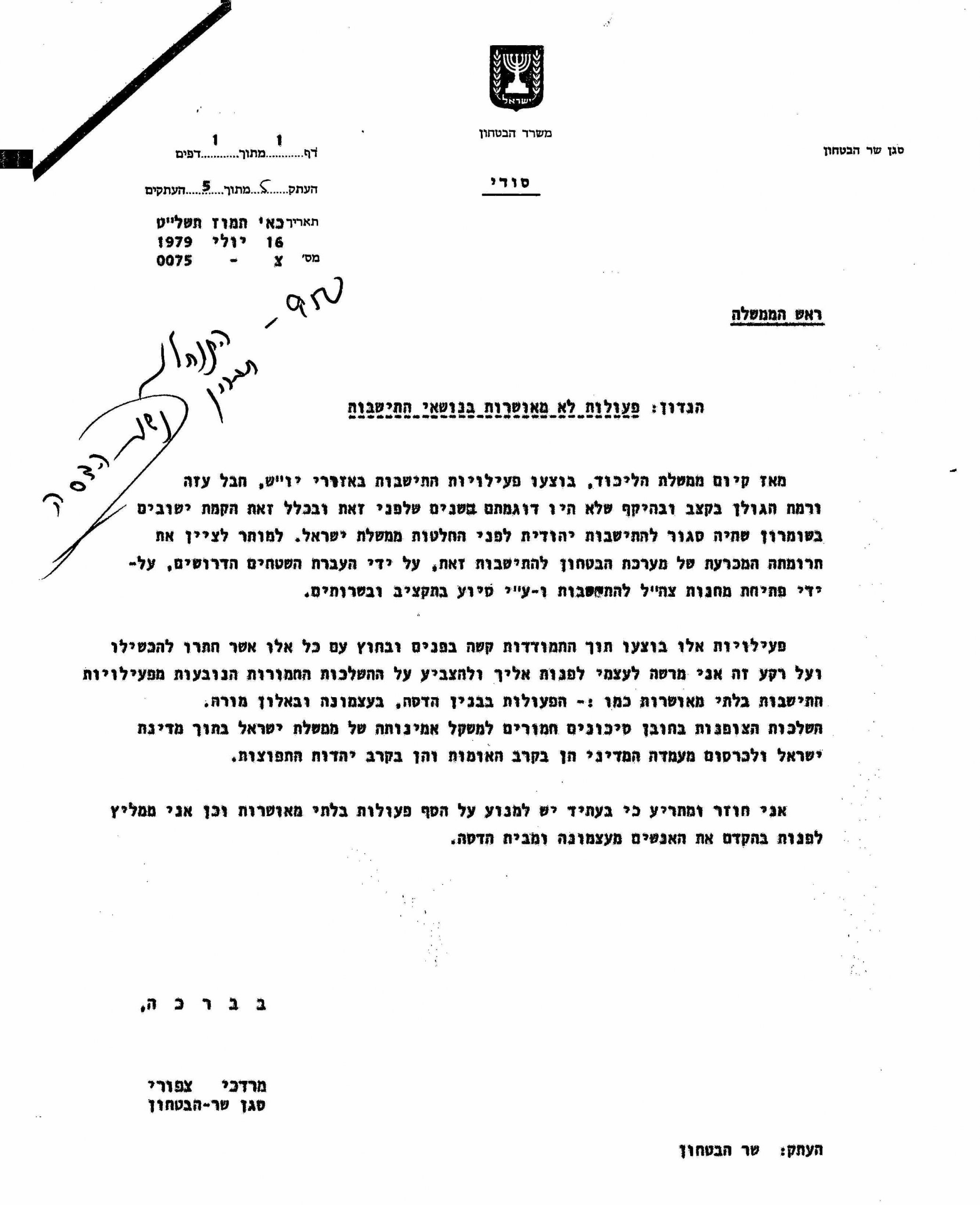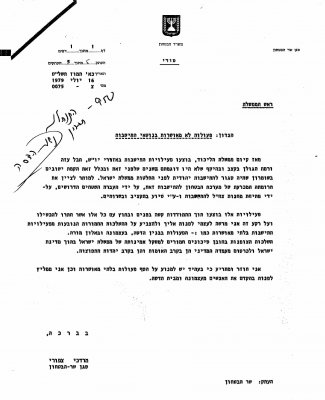Israel’s 18th government, with Prime Minister Menachem Begin at the helm, in power from June 1977 to August 1981, embodied a new, accelerated phase in Israel’s settlement policy in the occupied territories. This policy was succinctly expressed in Begin’s famous declaration during a visit with the Elon Moreh settlement group shortly after his election win. The group had received permission to settle in the Kadum military base after several attempts to establish a settlement in Sebastia without approval. Begin told the settlers: “Soon, there will be many Elon Morehs.” In a letter to Prime Minister Begin, Deputy Minister of Defense Mordechai Tzipori warns of the danger of unapproved settlements and suggests evacuating the settlers in Atzmona and Hebron.
In the decade between the 1967 war and the ascension of the Likud party to power in 1977, efforts to settle the areas occupied in the war focused on the Golan Heights, the Jordan Valley, the Sinai Peninsula and the Gaza Strip. The West Bank mountain ridge and the area north of Jerusalem in particular, were deliberately left out. The Begin government set out to alter the settlement map and step up construction of Jewish settlements in the Samarian Mountain Ridge, an area with a sizeable Palestinian population. In 1977 alone, the settlements of Almog, Elkana, Beit El, Bet Horon, Kochav Hashachar, Mevo Dotan, Mitzpe Yeriho, Neve Tzuf, Niran, Karnei Shomron, Shavei Shomron and Tekoa were built.
A letter Deputy Defense Minister Mordechai Tzipori sent Prime Minister Begin in July 1979, sheds some light on this policy. Tzipori, a recently retired brigadier general who quickly joined the Likud party and was elected MK, served as Ezer Weizman’s deputy at the Ministry of Defense. “Since the Liked formed the government,” Tzipori wrote to Begin, “settlement activities have been undertaken at a pace and scope never seen in previous years, including the establishment of communities in Samaria, which had been closed to Jewish settlement per resolutions made by the Government of Israel.” Tzipori commends the decisive contribution the defense establishment made to the settlement enterprise, casually mentioning the method it used, “opening IDF bases for settlement.” In other words, civilian communities were established in the occupied territories under false security pretexts in order to get around international law, which prohibits this.
Tzipori was a supporter of the settlement policy. He noted they were established, “while facing severe resistance both internally and externally, by those who sought to” derail the enterprise. Nevertheless, Tzipori expressed concern over “unauthorized” settlement activity, including, “the activities in the Hadassah building, Atzmona and Elon Moreh.” Atzmona was established in March 1979, northeast of al-Arish, in the Sinai desert and was later relocated to Gush Katif in the Gaza Strip. The settlement was dismantled and evacuated in 2005 as part of Israel’s disengagement from the Gaza Strip. Beit Hadassah, a historical building that belonged to Hebron’s Jewish community, was occupied at the time by a group of women and their children without permission. Tzipori said these activities were, “severe threats to the credibility of the Israeli government.”
He suggested evacuating Atzmona and Beit Hadassah urgently. Begin did not heed the deputy defense minister’s recommendation. Over the following years, more civilian settlements were established under security pretexts and in violation of international law.


